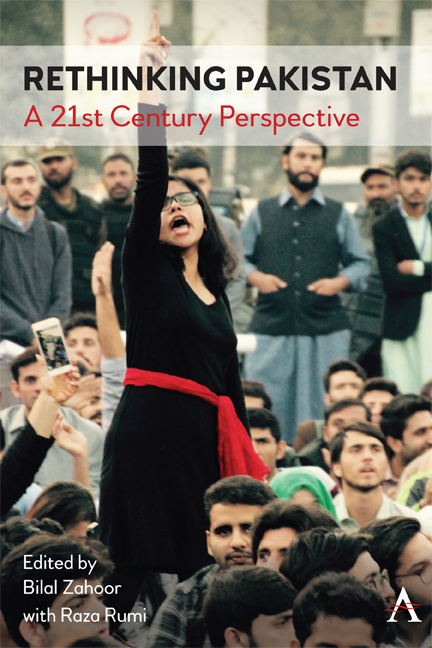Book contents
- Frontmatter
- Dedicated
- Contents
- Acknowledgements
- Introduction
- Part I Identity, Religion and Radicalisation
- Part II Development, Reform and Governance
- Part III Rights, Repression and Resistance
- Part IV Sex, Gender and Emancipation
- Part V Conflict, Diplomacy and Foreign Policy
- Contributors
- Bibliography
- Index
Chapter 18 - Understanding the Balochistan Conundrum
Published online by Cambridge University Press: 20 January 2022
- Frontmatter
- Dedicated
- Contents
- Acknowledgements
- Introduction
- Part I Identity, Religion and Radicalisation
- Part II Development, Reform and Governance
- Part III Rights, Repression and Resistance
- Part IV Sex, Gender and Emancipation
- Part V Conflict, Diplomacy and Foreign Policy
- Contributors
- Bibliography
- Index
Summary
Background
Balochistan is the largest and most ethnolinguistically diverse province of Pakistan but the smallest in terms of population. Baloch (including Brahuis) and Pashtuns respectively are the biggest ethnic groups, accounting for nearly 90 per cent of the total population of the province. Bordering Iran and Afghanistan, Balochistan occupies a central strategic place at the juncture of world's three important regions – Central Asia, South Asia and the Middle East. The province is rich in gas, copper, gold and other natural resources. Owing to its important strategic location and rich resources, Balochistan has often remained a centre of attention for national, regional and international actors. Over the past decade, the development of a deep seaport at Gwadar and the launching of various trans-state pipeline projects to meet Islamabad's energy needs have further enhanced Balochistan's economic and strategic importance. More recently, the establishment of the China Pakistan Economic Corridor (CPEC) has placed Balochistan at the centre stage of regional geo-economics and geopolitics.
Despite being rich in natural resources and having a large coastline, the province has experienced weak economic growth relative to other provinces and performs poorly on nearly all the social and human development indicators. With nearly three out of every four people living in acute poverty, Balochistan has the highest rate of multidimensional poverty among all the provinces in Pakistan. Similarly, it has the lowest literacy rate, lowest enrolment rates, highest gender gap, and lowest access and poorest learning outcomes. Over one million (39 per cent) children remain out of school. Furthermore, it features highest rates of maternal and infant mortality; for instance, every 785 out of a hundred thousand mothers lose their lives during pregnancy, whereas in the rest of the country this figures stands at 272.
Understanding the Conflict Landscape in Balochistan
Balochistan has remained a hotbed of ethnic conflict since the creation of Pakistan. The province has seen four insurgencies (1948, 1962–69, 1973–77, 2006–present) with the latest wave of violence being the most protracted one. The current insurgency began after the killing of prominent Baloch leader Nawab Akbar Bugti in a security operation in 2006.
- Type
- Chapter
- Information
- Rethinking PakistanA 21st Century Perspective, pp. 183 - 194Publisher: Anthem PressPrint publication year: 2020



